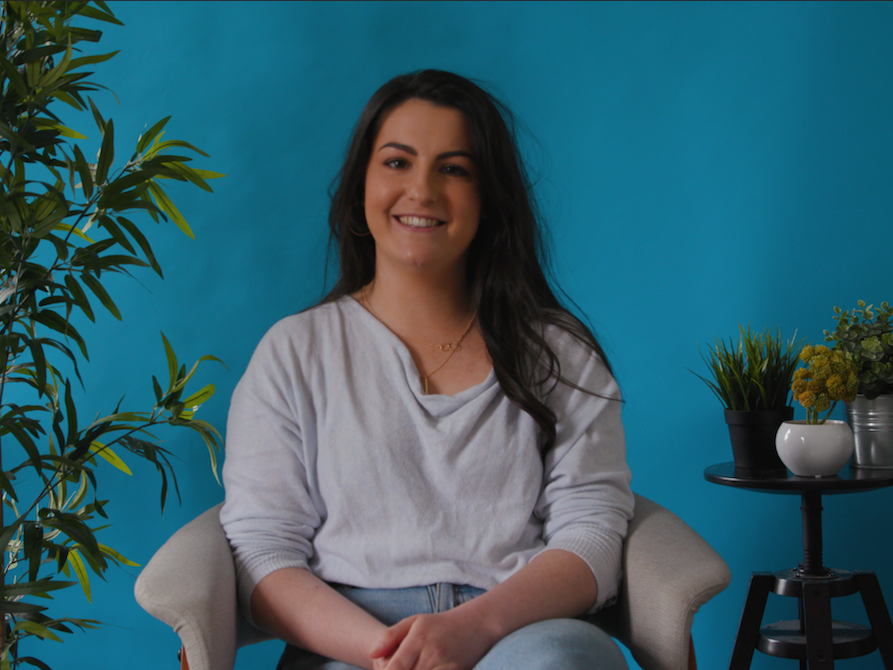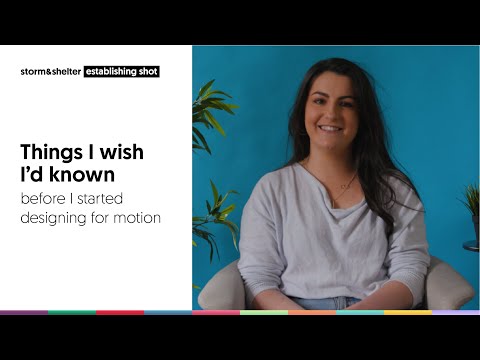Things I wish I'd known before starting to design for motion


Hi, I’m Izzy! I’m a designer here at Storm & Shelter as part of the MoGraph team, and here are some things that I wish I’d known before I started designing for motion and animation.

It’s ok to be a generalist
While I was at uni, I carried on being asked the same question… “What kind of designer are you?”
And I never used to know, and now I’ve realised it’s ok not to know.
That pressure of feeling like I needed to have a specific aesthetic, but enjoyed working across lots of design styles and techniques ended up being one of my greatest strengths as a designer once I started my career at Storm & Shelter.
Being a generalist designer means you can adapt to the briefs that come in and slot into your client’s brand guidelines so you can make sure you’re designing for what’s best for them rather than the other way around.
So if you’re still at uni and stressing over why you haven’t found that one thing you want to be known for, then don’t worry — you don’t have to choose!
Get Overlord
Before getting the Overlord, my After Effects files were A MESS. And when you’re collaborating with other designers or animators, that can be a problem.
Overlord is an Adobe plugin that makes the whole process a lot more streamlined as it lets you bring over everything from Illustrator into After Effects at the touch of a button — exactly how you set it up.
So basically, if you don’t have it, you need it.
There is never enough time
Now this one was a bit of a struggle for me, especially coming straight out of uni where I had months for a project and a majority of that time is in the planning and development.
Once you get into the industry, you don’t have weeks to think of an idea, sometimes you only have a few days…sometimes even less.
You can think up a million ideas, but it’s gotta stop somewhere. Always push for as much creative time as you can within the budget, but sometimes it just isn’t possible so its good to get
- Create mood boards that aren’t just design work.
Sometimes you have a specific idea in mind and tracking down an exact reference can take a lot of time. Think outside of just graphics and if you can create the mood via other mediums with a description of what you’re going for then that will work just as well.
- Communicate your ideas quickly and simply.
When you’re pitching the client is probably going to be very busy, and you may not even have the chance to speak to them directly. Getting into the practice of explaining your ideas in just a few slides will be extremely helpful in the long run.
Be confident in your designs
There is nothing worse than giving a whole bunch of options, and then the one that you didn’t really believe in is the one that gets chosen.
When I first started I thought the more options I gave, the more it showed I was thinking so I would give loads of different designs and layouts and give them to someone and be like ‘what do you think?’, but actually giving a more refined selection means that decisions can be made quicker and with more conviction.
At the end of the day you’re the designer, so be confident in that. Be that first filter before your ideas go to the wider team and only show them the two / three designs that you are completely sure will work, and that you will enjoy working on.
Say yes to what excites you
Now, I’m not saying yes to everything. But if you get excited about an opportunity, even if you’re not confident or comfortable, push yourself and say yes.
The worst that can happen is that you don’t like it, the best is that you find something that you love.
That’s exactly what happened to me. When I first met the people at Storm & Shelter back in my degree show, I knew nothing about design for motion as I had a more traditional graphic design background. But I remember feeling super excited by them as a company and so I took the chance.
I was terrified at the start, but I quickly eased in and now it’s something that I’m fully confident in and want to carry on taking forward.
